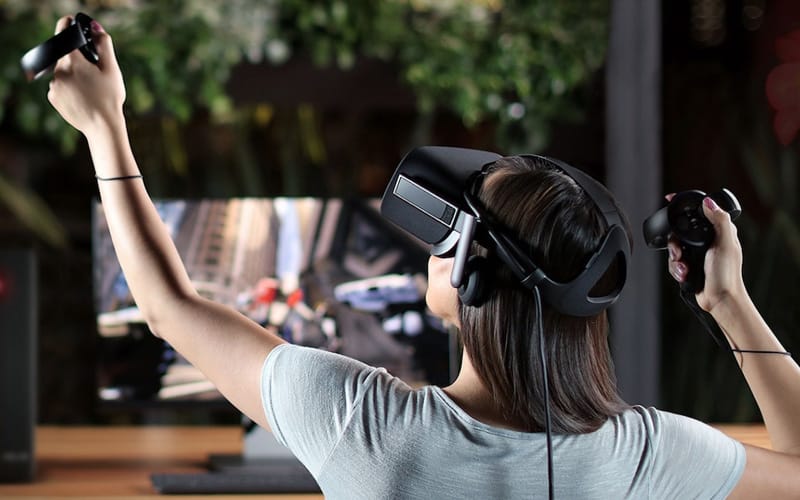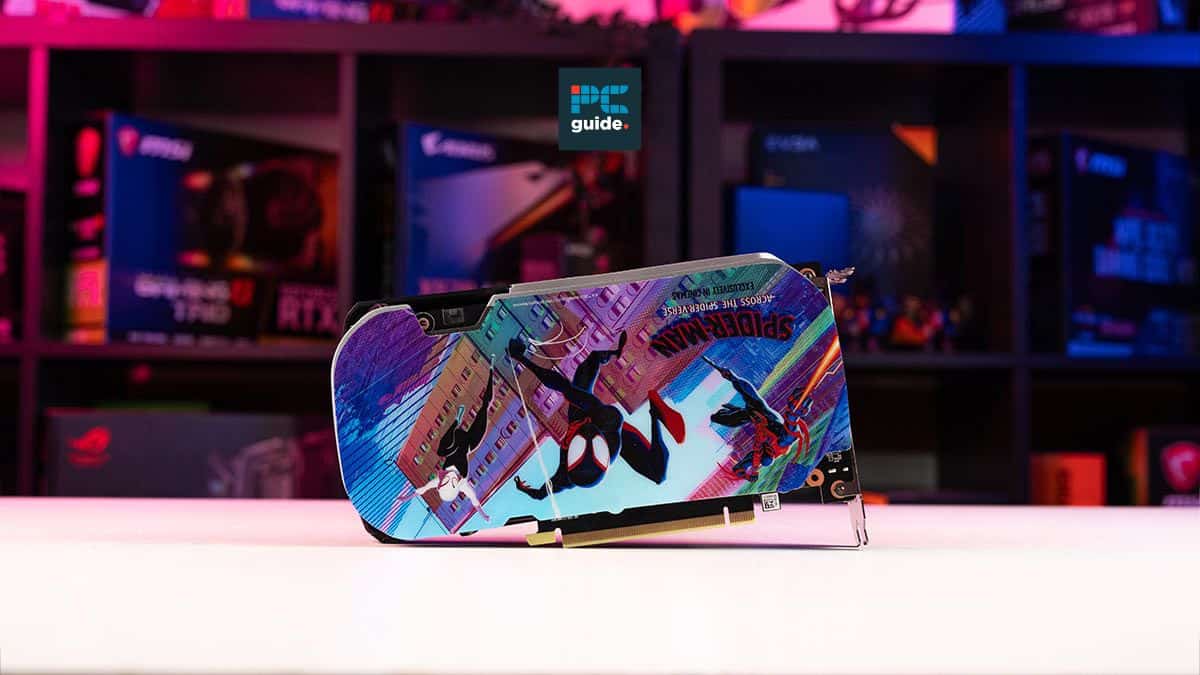Is the RTX 4060 good for VR? In theory
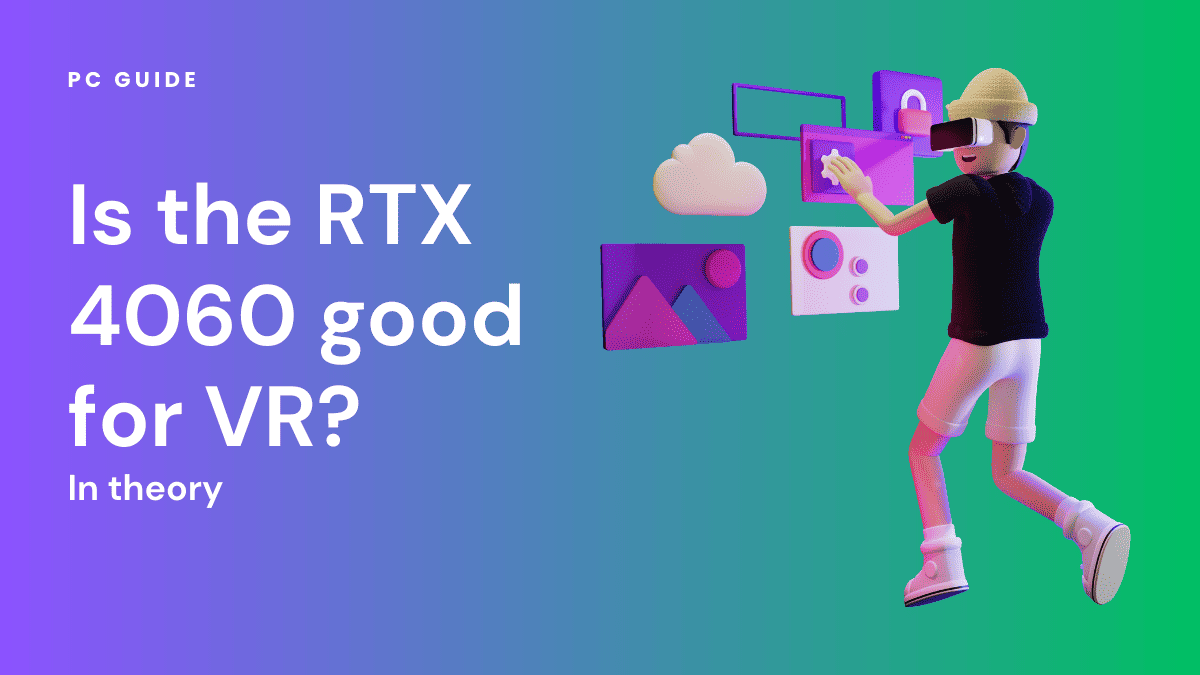
Table of Contents
When it comes to the question, “Is the RTX 4060 good for VR?” the answer isn’t as straightforward as it might seem. The Nvidia RTX 4060, a mid-range GPU, is perfectly capable of running VR applications. However, it’s important to note that while it can support VR, it may not provide the top-tier VR experience that some users might be looking for.
VR technology is rapidly advancing, and with each iteration, it becomes increasingly more demanding. This progression pushes the need for more powerful GPUs, and while the RTX 4060 is a competent piece of hardware, there are aspects to consider.
Prime Day is finally here! Find all the biggest tech and PC deals below.
- Sapphire 11348-03-20G Pulse AMD Radeon™ RX 9070 XT Was $779 Now $739
- AMD Ryzen 7 7800X3D 8-Core, 16-Thread Desktop Processor Was $449 Now $341
- ASUS RTX™ 5060 OC Edition Graphics Card Was $379 Now $339
- LG 77-Inch Class OLED evo AI 4K C5 Series Smart TV Was $3,696 Now $2,796
- Intel® Core™ i7-14700K New Gaming Desktop Was $320.99 Now $274
- Lexar 2TB NM1090 w/HeatSink SSD PCIe Gen5x4 NVMe M.2 Was $281.97 Now $214.98
- Apple Watch Series 10 GPS + Cellular 42mm case Smartwatch Was $499.99 Now $379.99
- ASUS ROG Strix G16 (2025) 16" FHD, RTX 5060 gaming laptop Was $1,499.99 Now $1,274.99
- Apple iPad mini (A17 Pro): Apple Intelligence Was $499.99 Now $379.99
*Prices and savings subject to change. Click through to get the current prices.
One of the main aspects to ponder is the card’s VRAM. Nvidia decided to stick with 8 GB of RAM for the RTX 4060 – a standard that has been in place for several years and is starting to show its age, particularly when we think about the emerging demanding games and higher resolutions.
While 8 GB of RAM is still adequate for most current games, it might start to struggle with newer, more intensive VR titles. This potential shortfall is exacerbated by the growing VR scene, which could soon require more than 8 GB of RAM to run smoothly and effectively.
For those looking for a more future-proof solution, the RTX 4060 Ti, with its additional RAM and enhanced performance, might be a more suitable option.
The RTX 4060 in the Evolving VR Landscape
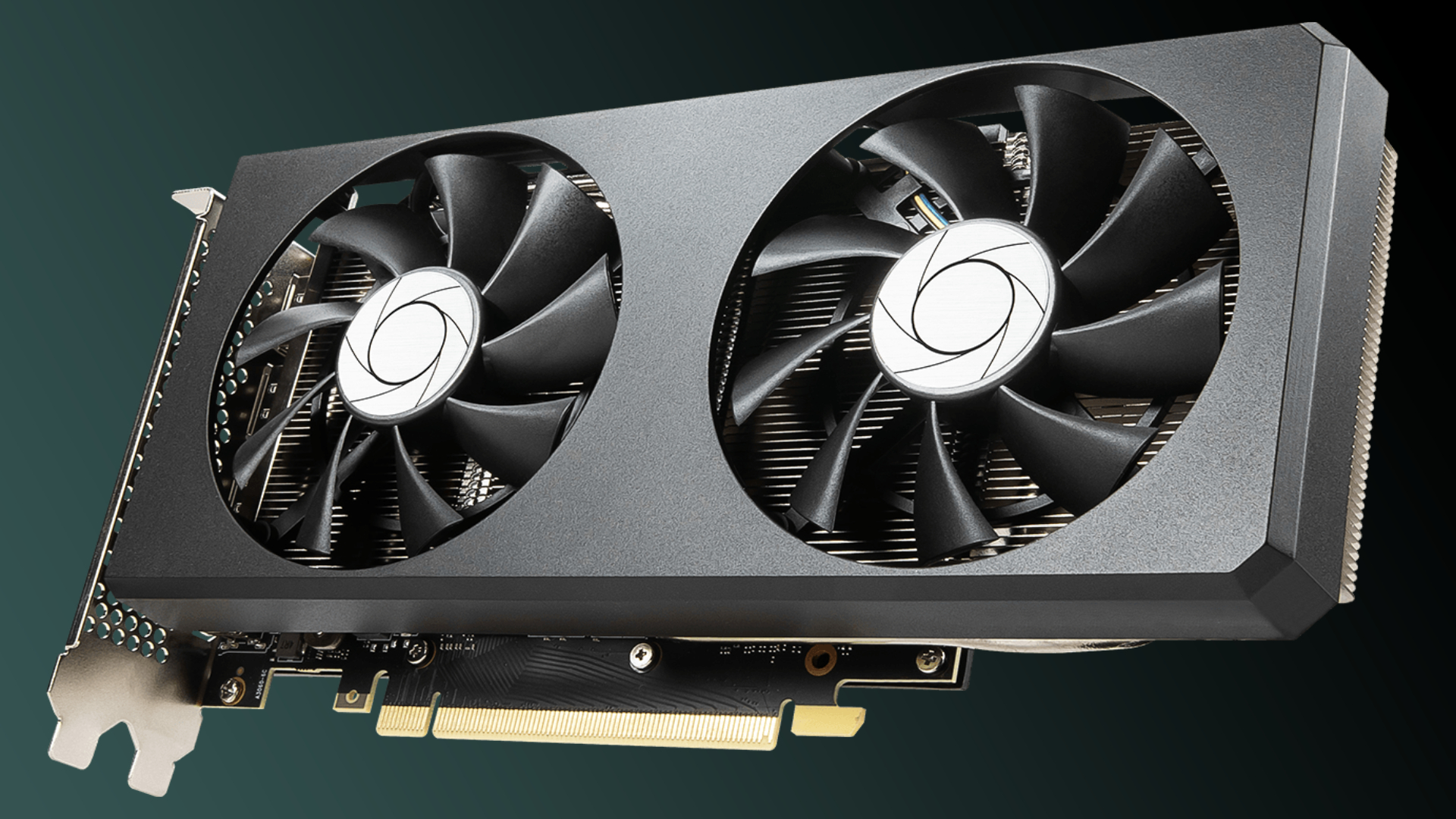
In light of these considerations, it’s fair to say that the RTX 4060, while competent, might not be the optimal choice for VR in the longer term. However, it’s not all bleak for the RTX 4060. Nvidia’s implementation of 3rd generation ray tracing in this card gives it a significant edge in rendering realistic lighting and reflections – a crucial aspect of immersive VR experiences.
However, for those prioritizing the VR experience, it might be worthwhile considering something like the RTX 4070 instead. The RTX 4070 offers a more robust set of features and greater capabilities, improving it equipped to handle the requirements of high-quality VR.
How does the RTX 4060 compare with other graphics cards?
When it comes to comparisons, the RTX 4060 holds its own against other top-tier graphics cards. For instance, if we compare it with the RTX 3060 Ti, we see some significant improvements. The RTX 4060 has a base clock speed of 2310 MHz, considerably higher than the 3060 Ti. This increased speed translates to better performance in high-demand scenarios like VR gaming.
In terms of memory, the RTX 4060 comes with either 8 GB or 16 GB GDDR6, providing ample space for gaming assets. This is crucial in VR, where high-resolution textures and models are the norm. The memory bandwidth of the RTX 4060 is 448 GB/s, ensuring that data can be transferred quickly and efficiently.
What are the specs of the RTX 4060?
The RTX 4060 is packed with features designed to enhance gaming experiences. Its base clock speed of 2310 MHz and a boost clock speed of 253av 2535 MHz means it can handle high-intensity gaming and VR experiences.
The RTX 4060 also boasts a memory of 8 GB or 16 GB GDDR6, ensuring it has enough capacity to handle complex VR environments. Its memory bandwidth of 448 GB/s ensures data can be transferred quickly, reducing lag and latency in VR games.

The Hardware and Power of RTX 4060
The RTX 4060, a product of Nvidia’s constant push for innovation, is a testament to the power of modern GPU technology. This graphics card, part of the renowned GeForce line, is packed with features that not only make it a powerhouse for traditional gaming but also a promising hardware for virtual reality.
Its capabilities stem from the intricate blend of its components and the Ada Lovelace architecture it is built on. In this section, we delve into the hardware specifics of the RT 4060, explore its suitability for VR, and compare it with other contenders in the market.
How Does RTX 4060’s Hardware Fare for VR?
The RTX 4060, part of the NVIDIA GeForce line, is built on the Ada Lovelace architecture. This architecture brings several advancements, including more CUDA cores, Tensor cores, and RT cores. These cores are essential for processing complex computations, AI operations, and real-time ray tracing, respectively. All these features are crucial for creating immersive and realistic virtual reality experiences.
In addition to the cores, the RTX 4060 also boasts an ultra-fast cache that significantly reduces latency, ensuring smooth VR experiences. Furthermore, the RTX 4060 is equipped with a robust power supply system, ensuring consistent performance even under heavy loads. The cable management is also top-notch, making it easy to integrate into any VR setup.
RTX 4060 vs. Other Graphics Cards: A Comparison
When comparing the RTX 4060 with its predecessor or other graphics cards like the AMD Ryzen series, it’s essential to consider the Founders Edition. This edition often has a unique design and sometimes even better performance. In the case of the RTX 4060, the Founders Edition boasts a sleek design and top-tier performance, making it a popular choice among gamers.
The RTX 4060, with its ray tracing cores, outperforms many of its competitors in rendering realistic lighting and shadows, which is a significant advantage in VR. Games like Requiem and A Plague Tale, which rely heavily on atmospheric effects, are significantly enhanced with the RTX 4060’s capabilities.
In conclusion, the RTX 4060, with its advanced hardware and power, is well-equipped to handle the demands of virtual reality. Whether you’re exploring the ultra-realistic worlds of Requiem or battling through the dark corners of A Plagues Tale, the RTX 4060 is capable of delivering a smooth, immersive VR experience.
Is the RTX 4060 capable of running all VR games?
The world of VR gaming is immersive and exciting, but it requires powerful hardware to run smoothly. One of the key components in this setup is the graphics card. In this section, we’ll explore the capabilities of the Nvidia GeForce RTX 4060 in handling VR games, its power consumption, and how it compares to other graphics cards on the market.
How does the RT 4060 handle VR games?
The RTX 4060 is designed with VR in mind. Its high clock speeds and generous memory ensure it can handle the most demanding VR games. With support for both HDMI and DisplayPort, it offers flexible connectivity options for various VR headsets.
In terms of frame rate, the RTX 4060 can deliver smooth, lag-free experiences, essential for preventing motion sickness in VR. It consistently hits high FPS (frames per second) counts even in demanding games, provided you have a fast SSD for quick data access.
The power efficiency of the RTX 4060 is also noteworthy. Despite its powerful specs, it has a TDP of 170W, making it more power-efficient than many other graphics cards on the market, including AMD’s Radeon RX series. This efficiency means it can deliver high-quality VR experiences without overheating or causing system instability. The cooler design of the RTX 4060 also helps in maintaining optimal temperatures during intense VR gaming sessions.
What is the power consumption?
The RTX 4060 is designed to be power-efficient. It has a TDP (Total Design Power) of 170W, which is lower than many other graphics cards on the market. This efficiency means it can deliver high-quality VR experiences without consuming excessive power.
This not only helps to keep your electricity bills down, but also reduces the strain on your system, preventing overheating and improving longevity. With the RTX 4060, you can immerse yourself in the virtual world without worrying about the impact on your system or your wallet.
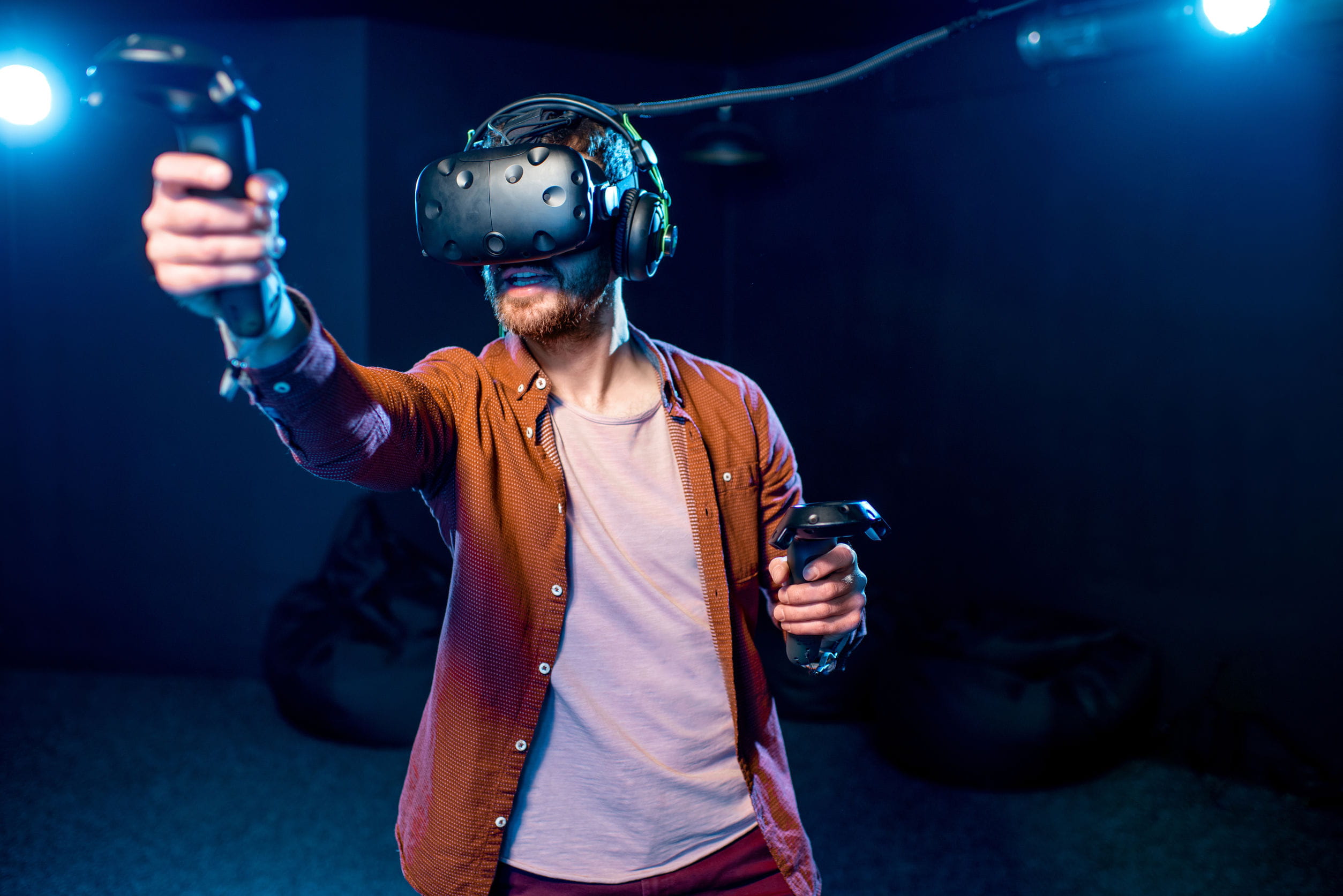
RTX 4060’s Performance in VR Gaming
Virtual Reality (VR) gaming is an immersive experience that demands high-performance hardware. The graphics card, in particular, plays a crucial role in determining the quality of this experience. In this section, we’ll delve into the performance of the RTX 4060 in VR gaming, its ability to generate frames efficiently, and its compatibility with high-end VR games.
How Does RTX 4060 Handle Frame Generation in VR?
Frame generation is crucial in VR. The RTX 4060 excels in this area, thanks to its powerful hardware. With its high number of CUDA cores and the power of the Intel Core processor, the RTX 4060 can generate frames quickly and efficiently, ensuring smooth VR experiences. This efficiency makes it a worthy upgrade for those seeking to enhance their VR gaming setup.
Moreover, the RTX 4060’s high VRAM capacity allows it to handle complex textures and high-resolution VR games without breaking a sweat. This is especially beneficial in VR, where maintaining a high and stable frame rate is critical for a smooth, immersive experience.
RTX 4060 and VR Games: A Match Made in Heaven?
The RT 4060’s performance in VR games is impressive. Its powerful hardware and features like real-time ray tracing make it capable of running even the most demanding VR games. One such game is Cyberpunk, which is known for its high-end graphics and immersive VR experience. The RTX 4060 handles this game admirably, providing a smooth and immersive experience.
However, it’s not just about the hardware. The RTX 4060 also excels in compatibility, with full support for the latest VR headsets and game titles. Whether you’re using an Oculus Rift or a HTC Vive, you can expect a smooth, immersive experience with the RTX 4060. It’s also an excellent choice for those looking to upgrade from an older graphics card, like the XT series, to a more powerful and VR-ready option.
The RTX 4060 and the MSI benchmark
The RTX 4060 performs well in the MSI benchmark tests. It delivers high frame rates and excellent performance, even under the heavy loads that the MSI benchmark tests impose. This performance is due to the RTX 406an RTX 4060’s high clock speeds, generous memory, and efficient power consumption.
The benchmark tests also indicate that the RTX 4060 can handle high loads without overheating or causing system instability, essential for long VR sessions.
The RTX 4060 and PC Gaming
PC gaming is another area where the RTX 4060 shines. Its powerful hardware and features like real-time ray tracing make it capable of delivering top-tier performance in PC games. Whether you’re playing Cyberpunk or any other game, the RT 6070 can deliver a smooth and immersive experience.
The Future of VR with RTX 4060
Virtual Reality (VR) is a rapidly evolving field, with new games and technologies emerging constantly. As such, it’s crucial to have a graphics card that can not only handle current VR games but also those of the future.
In this section, we’ll explore the future-proof capabilities of the RTX 4060 and its compatibility with various VR headsets.
Can RTX 4060 Handle Future VR Games?
The RTX 4060 is not just about current games. Its powerful hardware and features like real-time ray tracing make it capable of handling future VR games. This makes it a future-proof option for gamers.
With its high number of CUDA cores, Tensor cores, and RT cores, the RTX 4060 is well-equipped to handle the increasing complexity of future VR games. This means that investing in an RTX 4060 now could save you from needing to upgrade your graphics card in the near future.
How Does RTX 6070’s Performance Compare with Other VR Headsets?
The performance of the RTX 4060 also extends to its compatibility with various VR headsets. Whether you’re using an Oculus Rift, HTC Vive, or any other VR headset, the RTX 4060 can handle it. This makes it a versatile choice for any VR enthusiast.
Its high-performance and wide compatibility ensure that regardless of what advancements come in VR technology, the RTX 4060 will be able to deliver a smooth, immersive experience.
Final thoughts
In conclusion, the question “Is the RTX 4060 good for VR?” can be answered affirmatively. The RTX 4060 is a competent GPU that can handle the demands of current VR applications. Its performance is bolstered by Nvidia’s 3rd generation ray tracing and the promise of DLSS, which together create immersive and realistic VR experiences.
However, its 8 GB of RAM may become a limiting factor as VR games continue to evolve and demand more resources. This is where the RTX 4060 Ti, with its additional RAM and enhanced performance, comes into the picture.
For those looking for a more future-proof solution, the RT 4060 Ti is a more powerful GPU that is designed to handle the future of VR gaming. This means that while the RT 4060 is a solid choice for current VR gaming, those who are looking to future-proof their systems should consider the RT 4060 Ti.


